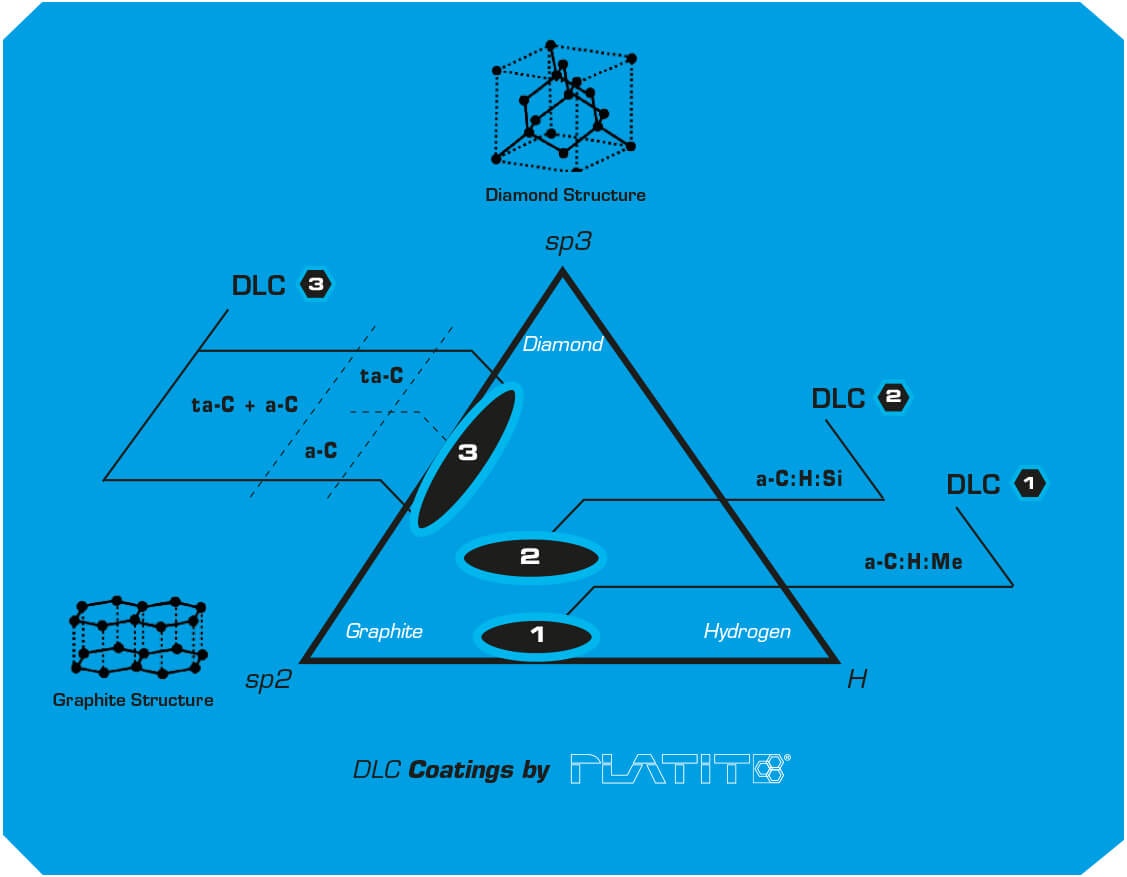The higher proportion of sp3 bonds results in:
- higher density,
- higher hardness (at room temperature and elevated temperature),
- thermal stability,
- oxidation resistance,
- higher residual stress and
- lower thermal conductivity.
This characteristic leads to special properties and application possibilities:
- Smooth surface
- High mechanical hardness
- Chemical resistance
- Low coefficient of friction between tool and workpiece
- Good corrosion resistance
- Non-reflective surface
- Suitability for biocompatible products

Categories of DLC coatings
- a-C = Hydrogen-free amorphous carbon
- ta-C = Tetrahedrally-bonded hydrogen-free amorphous carbon
- a-C:Me = Metal-doped hydrogen-free amorphous carbon
(Me = Ti) - a-C:H = Amorphous carbon with hydrogen
- ta-C:H = Tetrahedrally-bonded amorphous carbon with hydrogen
- a-C:H:Si = Si-doped amorphous carbon with hydrogen
- a-C:H:Me = Metal-doped amorphous carbon with hydrogen
(Me = W, Ti)
Comparison of the main properties of PLATIT DLC coatings
DLC1
DLC2
DLC3
PLATIT coating unit
Pi111,
Pi411,
PL1011Pi411,
PL711,
PL1011Pi411
Composition
a-C:H:Me
a-C:H:Si
ta-C + a-C
(over 50% ta-C)Process
Arc in C2H2 atmosphere
PECVD
Sputtering
Coating architecture
As top layer
As stand-alone or as top layer
As stand-alone
Doping
Ti or Cr
Si
None
Coating thickness [µm]
< 1
< 3
0.3 - 1
Young’s modulus [GPa]
200
250
350 - 450
Nano-hardness [GPa]
< 20
> 25
35 - 55
Roughness
Ra ~ 0.1 µm
Rz ~ coating thicknessRa ~ 0.03 µm
Rz ~ coating thicknessRa ~ 0.06 µm
Rz ~ coating thicknessCoefficient of friction [μ]
PoD (at RT, 50 % humidity)0.15
0.1 - 0.2
0.1
Max. service temperature [°C]
400
400
450
Coating temperature [°C]
< 400
< 220
< 100
Main application
Improvement of the run-in process of a tool, lubrication by formation of transfer films
Components, punches and dies
Tools
Would you like to learn more?
Please click on the following links: